Sitting centered in the saddle while riding straight lines or around corners makes or breaks your horse’s response—no matter your discipline. Your brain might tell you that you’re sitting squarely in the middle, but you probably have more weight to the right or left. This confuses your horse, because he’s getting one signal from your hands and legs and another from your seat.
If you lean in one direction, you’ll find that your horse drifts off a straight path, resists as you go around a corner, or pushes when you travel a circle. This exercise will help you determine if you’re a “right rider” (lean to the right) or a “left rider” (lean to the left) so that you can square-up your position.
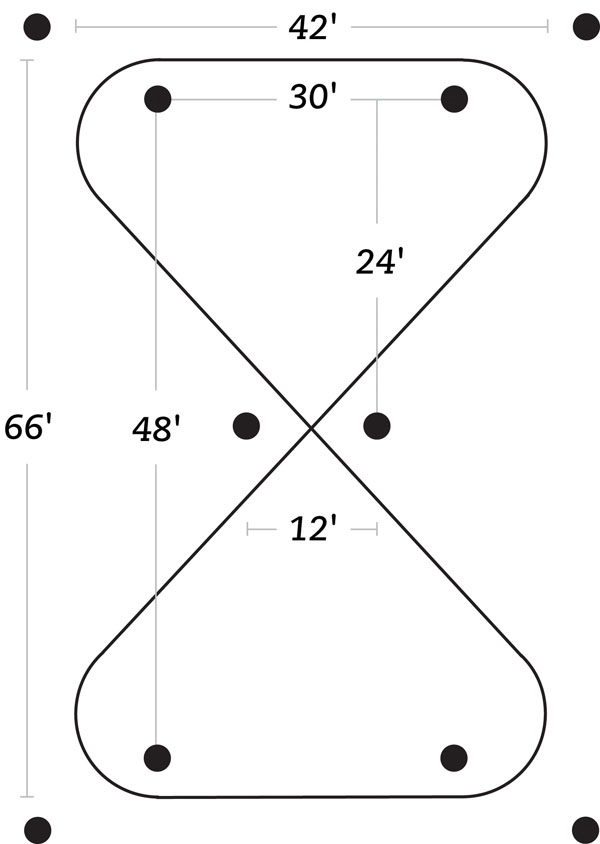
Grab 10 markers to set up your pattern (above). As you’ll see, you don’t need cones; you can use any safe objects, such as buckets or flowerpots. (My inflatable pink flamingo is a favorite marker in my barn.) Outfit your horse in a bit he responds to, and ride two-handed.
1. Paying close attention to your hand position will make a big difference in your success at this exercise. The photo on the left shows neutral position—hold your hands about 12 inches above your saddle, with your reins even and your wrists straight. Think of your horse’s neck running right through the middle of your hands in a straight line. When you execute a turn, think of your reins like a steering wheel. To turn to the left, lower your left hand and raise your right hand. It’s the opposite for a right turn. Also as in driving a car, you’ll begin looking into your turn before you get there and ease into it, making a slow but deliberate movement, then ease back onto the straight line.
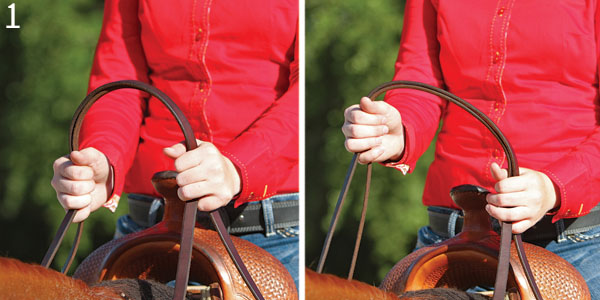
2. Beginning at one of the corner cones, pick up a working jog. Travel a straight, diagonal path through the two middle cones to the far side of the destination cone. On this path, be cognizant of your body position. If you lean in one way or the other, it’ll affect the straightness of your approach and the success of your turn around the cone. Keep your body straight and your eyes on the first destination.
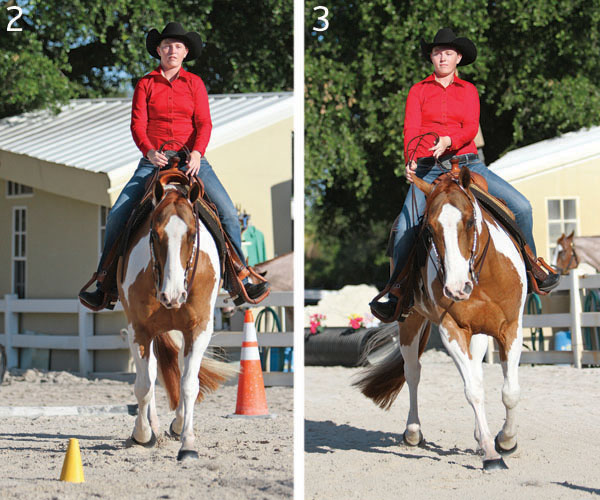
3. As the rider comes around the corner, she drops her hip and shoulder into the turn, which causes her horse to drop his shoulder and lean into the turn, too. Whether a slight or extreme lean, it’ll interfere with her horse’s response. Not only will they struggle to get around the cone, but they’ll have problems returning to the straight line on the path to the next cone.
4. This is a big improvement over Photo 3. You can see that she’s turned her body to follow her path of travel and is looking where she’s going. This allows her to keep her body centered in the saddle, and her horse can keep his shoulders elevated and square through the corner. Her horse will travel easily around the corner and back onto the straight path to the next turn.
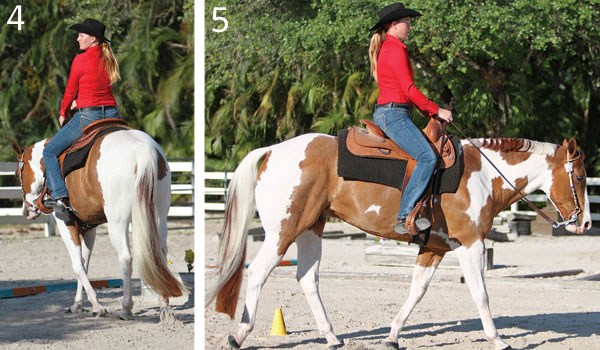
5. The rider eases her horse out of the corner, just as she would if she were driving a car. You can see that her hands are nearly back to neutral position, and her horse is back on a straight path toward the next cone. She has her eyes up and focused on the next corner.
6. Here’s where you really learn if you’re centered or not. When you pass between these middle cones, if you’re directly in the middle of the markers, you’re probably centered. If you’re leaning toward one side, you’ll wind up more toward that cone—or even hit it or go outside it. If you have to move your hands left or right as you travel between the middle cones, pay close attention to which direction, then check your body position. You’ve probably dropped the opposite hip or shoulder, at least.
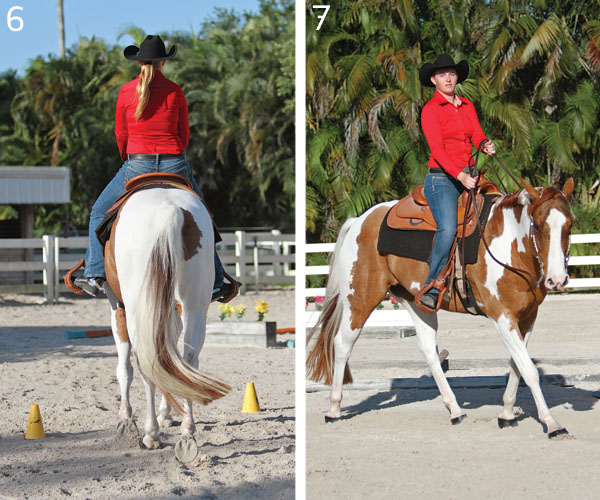
7. Work the exercise in both directions, paying close attention to whether you struggle more with turns and straightness to the left or right. If, for example, it’s more difficult to the left, you’re probably a “right rider,” and tend to lean in that direction. Spend more time working this exercise in your weaker direction, and pay close attention to squaring your body. With practice, you’ll reform your position to be correct and strong both to the left and right.
Mark Stevens trains all-around horses and coaches youth and amateur riders for AQHA competition from his facility just west of Fort Lauderdale, Florida. From beginner riders to world champions, Stevens’ goal is the same: To communicate humanely and individually with horsemen and equine partners. Learn more about Stevens’ program at markstevenshorses.com.






